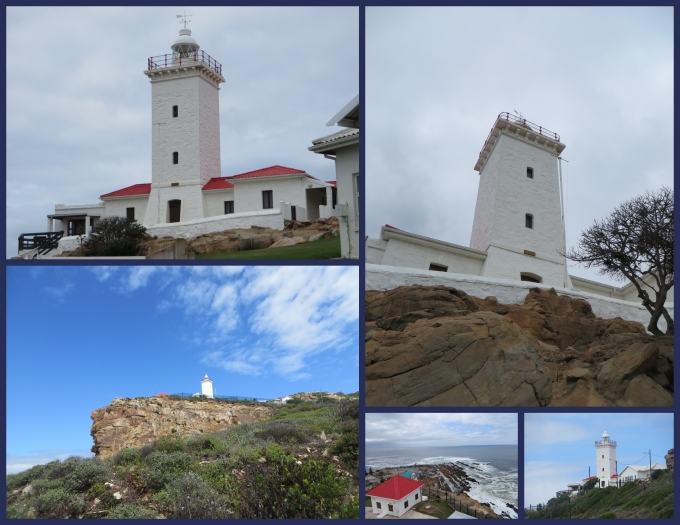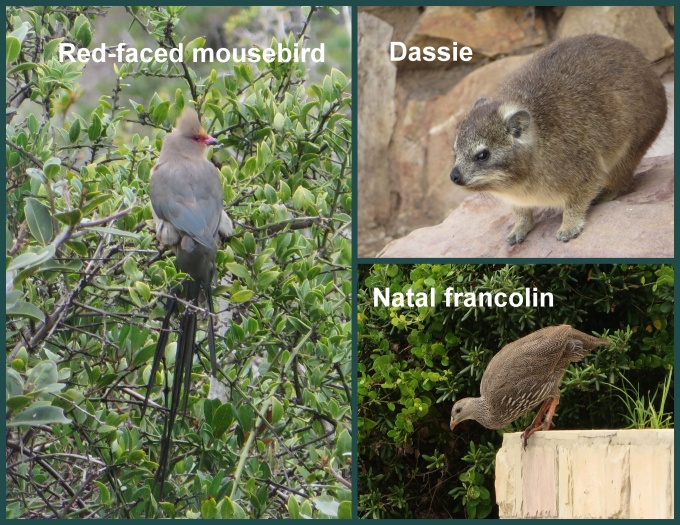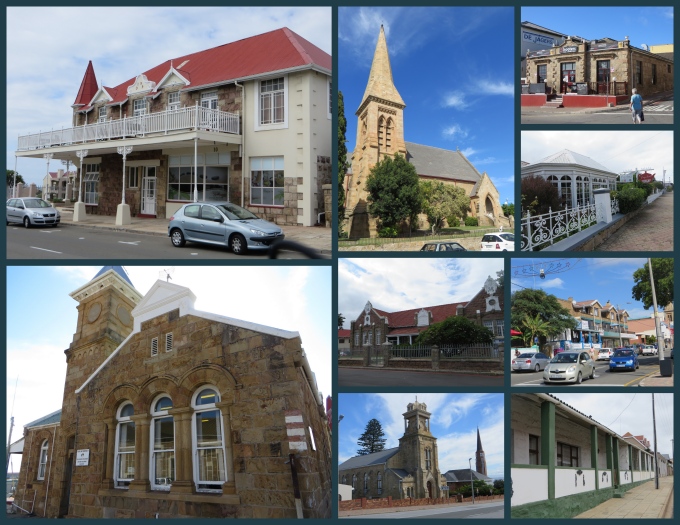Discovering Mossel Bay pt. 3
/Cape St. Blaize and a walk through history
Our time in Mosselbaai was sadly dwindling. There was more to see and do, but winds and weather were dictating our length of stay. The port is busy day and night. We watch fishing boats arrive, gulls swarming as they get their share of the catch of the day. The National Geographic cruise ship, Orion, was in port and we watched it glide out of the breakwater on its departure one late afternoon.
There was one day left before a weather window with easterlies would appear and we wanted to make the most of it. It was a bit drizzly with early morning fog, but we figured we wouldn't melt. We decided a visit to the Cape St. Blaize Lighthouse would be a good start to the day. The lighthouse sits high on a rugged sandstone bluff that is riddled with caves. We headed to the point and walked a bit on the Cape St. Blaize Trail. It was too muddy and slippery for comfort, but the views were outstanding.
We backtracked and found the steep road leading up to the lighthouse. Built in 1864, it's one of only two manned lighthouses remaining on the South African coast. Unfortunately, the lighthouse keeper was not available and no one else was around. It didn't stop us, however, from climbing the steep stone steps to the lower observation balcony and getting a good up-close view of the neatly kept lighthouse and stupendous views of the foreshore below.
We enjoyed the birds and wildlife on the rocky, bush-lined road up to the lighthouse. Rock dassies (Cape hyrax) poked their heads out of rocks, reminding us of marmots in the Rocky Mountains. A bit of trivia, according to Wiki, the closest living relatives to hyraxes are modern-day elephants and sirenians (manatees). A Natal francolin hen jumped out of the bush and ran in front of us. Redfaced mousebirds (love that name) were flitting from bush to bush in great numbers.
We'd picked up a self-guided map of historical buildings in Mosselbaai from tourist info and enjoyed identifying and learning the history of several turn-of-the-20th-century buildings in town as we passed them. The primary building material was sandstone and some of the buildings were grand. St. Peter's Anglican Church (1878), the Klipkerk (2nd Dutch Reformed Church-1880) and the Punt (Point) Primary School (1909) were particularly fascinating and ornate. The town pays attention to its history and heritage and it shows.
It was lunchtime and I had my heart set on lunch at the Santos Beach Pavilion, just because of its history and location. We could see the pavilion, sprawled regally on the beach, from Nine of Cups. We'd viewed it on a spectacular day from atop the hill at the Dias Museum. I'd read about it. It was time to visit. Built in 1906 from local sandstone, it was purportedly designed by an architect that drew his inspiration from a pavilion he'd seen on the beach in Brighton, England. The Victorian style was grand and ornate and served as the official reception venue for Prince Edward, Prince of Wales, when he visited in 1925. A lunch of calamari and chips with a cold beer on the veranda overlooking the sandy beach was absolutely lovely.
We soaked up the atmosphere of the place while watching Cups bob gracefully in the light westerly breeze. On the return walk up to town, we had great view of Cups and the entire harbor from our vantage point.
As we returned to Cups at the end of the afternoon, I took a pic of the mussels that thrive along the breakwater entrance. There's no doubt how Mosselbaai got its name.
The weather window is approaching and we're not at all ready to leave this lovely town. We could easily stay longer or return to Mosselbaai again and again and still find it appealing. It's a gem of a place.









